Wine is an alcohol product obtained from the fermentation of wort. He called the juice of grapes or other fruits, berries. Wort is transformed into the final product using yeast. They work in an environment that consists of water, pectins, carbohydrates, organic acids. The composition of the wort also includes tannins, nitrogenous and coloring substances. The wine contains vitamins, enzymes, minerals, as well as essential oils.
The composition of the final product depends on the variety of fruits or berries. Also, the quality of the source material for production is affected by climatic and weather conditions, soil composition and many other factors. How is going wine productionwill be discussed in detail below.
Business planning
Wine Production in Russia is one of the most prestigious types of entrepreneurial activity. Such enterprises create a large number of jobs.
The profitability of production in the first three or even four years will be negative. Net profit in this period will not be able to cover all costs of production. However, after this period, the situation changes radically. The profitability of the enterprise can be 100% or more.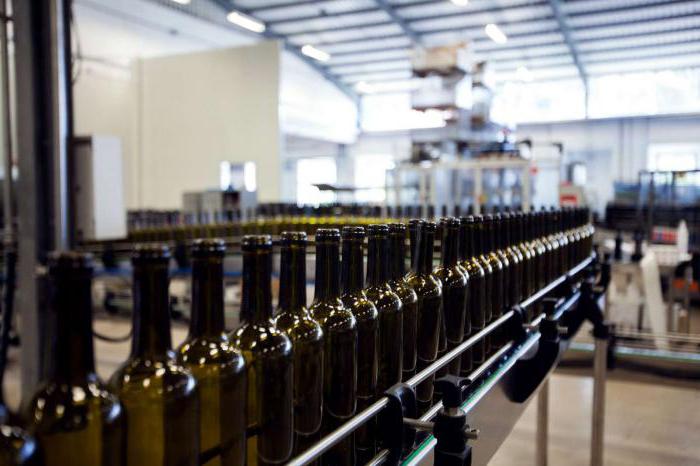
The organization of wine production, like any other type of economic activity, requires a planning process. For example, for an enterprise with a production capacity of 8 thousand decalitres of wine per month (table, dessert, liquor), a start-up capital of 2.7 million rubles will be required.
Attracted investments will be directed to the purchase of equipment for production lines, raw materials, and office equipment. There will also be some other expenses.
When choosing a place for the construction of a small wine factory, it is necessary to take into account the transport accessibility and proximity of consumers.
Stages of creating a plant
After the planning process is completed, it is required to organize the work of the enterprise itself. Creating a business in this direction is carried out according to a certain scheme. First of all, attention should be paid to the choice of site for the construction of the plant. It can be purchased or rented.
Next is the registration of the enterprise. Permits are issued to conduct such business activities. These are primarily wine license. Certification of all activities of the company is also carried out.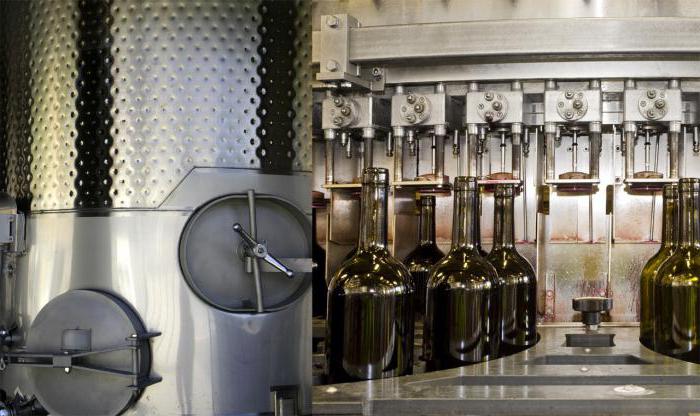
After obtaining all permits, the construction and landscaping phase is carried out. Paved roads, communications. After that, production and maintenance equipment is purchased and installed. Personnel are selected and trained.
At the final stages, the purchase of raw materials is carried out, production lines are launched, and their proper operation is being established.
Types of technology
Wine production may be primary or secondary. They have several characteristic features. Primary winemaking gravitates to areas in which raw materials for production are grown. At the preparatory stages, crushing, separation of seeds, ridges and seeds occurs. Next is the pressing. The resulting juice settles and cools.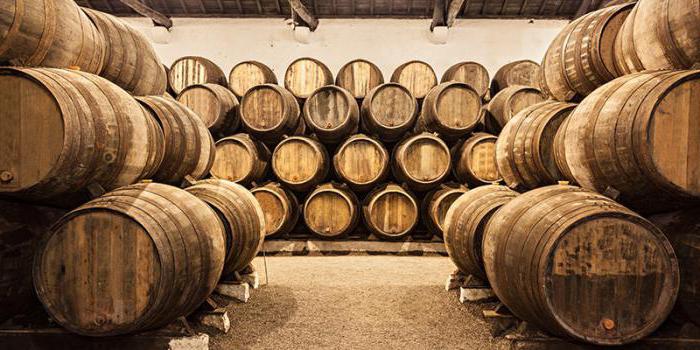
In primary winemaking, one of the most important operations is the fermentation of juice. Yeast is added in an amount of 1.5 or 2% (depending on the variety of grapes or berries). After fermentation, the wine is filtered.
Secondary wine production may be far from sources of raw materials.In the process of refining, topping up is carried out, as well as filtering and cooling of the product. Can be overfilled, pasting containers, as well as heat treatment.
Production technology
In the primary production of wine, most stages of the process are the same for many types of finished products. But there may be some differences. This is how special wines are made.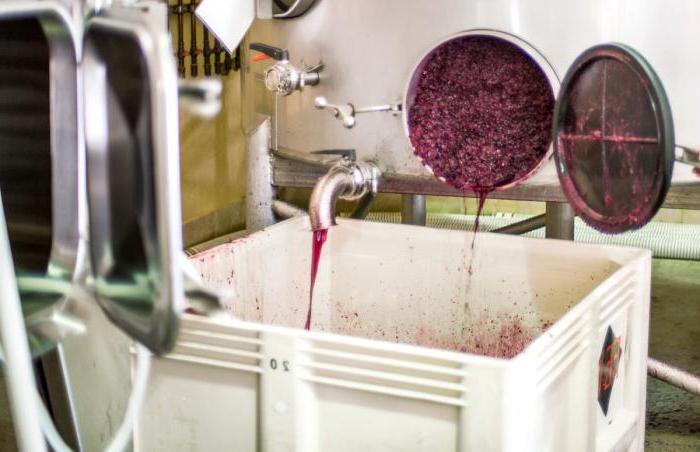
At first grape press crushes berries. The output is juice, in which there are bones and skin. It is called a must. In this case, the ridges are fully loaded. In the process, we adhere to acceptable production standards. Combs are transported for disposal.
The clarified wort is fermented. It turns into wine. Further, the wort is defended. Suspended particles are removed from it. By cooling or by adding sulfuric acid, premature fermentation is prevented.
After this, the first transfusion occurs. Wine is removed from the yeast. In the future, wine is refined in the basement.
Material preparation
Technology and winemaking equipment may differ when creating different varieties of the final product. The preparatory process is carried out in almost the same way for all varieties.
Harvested grapes are processed under production conditions. Therefore, the acceptance of raw materials is as important a stage in the creation of wine as subsequent technological operations. Received berries must meet the standards that are put forward to a specific type of final product. This is a healthy, pure grape of the same variety. It should not have leaves or shoots. There is also a limit on the number of berries damaged by diseases or pests. The acidity and amount of sugar in the incoming variety must comply with the technological requirements of the intended production.
Berries that meet the standards presented are accepted to the plant in batches. At the reception, an average sample is taken, and its quality is analyzed. For each batch, the direction in the production process is determined. Regardless, all grapes accepted by the plant undergo primary processing. The clusters are washed, the ridges are separated from them, crushed and a certain treatment is carried out. Sometimes grapes are not washed, but wort is defended.
Equipment list
To create a wine factory, it is necessary to ensure the availability of special equipment. Moreover, machines will be required both for the main line and for the spill. First of all, you should purchase pneumatic grape press. Also an important element of the production line is a berry crusher. It should be provided with a separator combs.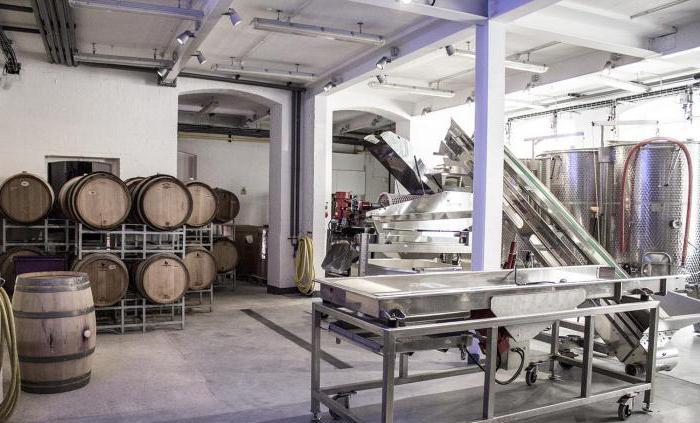
For pulp, a special receiver container is required. To divert the ridges for processing, you need a conveyor belt. To qualitatively remove unnecessary components from the juice, you should purchase a filter press.
The spill line consists of several elements. This is a special machine, as well as a capping machine. To apply labels, you need an applicator. The conveyor will transfer finished products to the production line.
Red and White Table Wine
Red wine production involves heat treatment of raw materials. Scalding is used for varieties of the American group and isabel varieties of berries. Up to 2% yeast is added to the juice. The fermentation process occurs at a temperature of 26 to 30 ºС. This requires stirring up to 5 times a day. When the wort is separated from the pulp, the process of maturation occurs. The clarification of wine materials with yeast occurs in full tanks.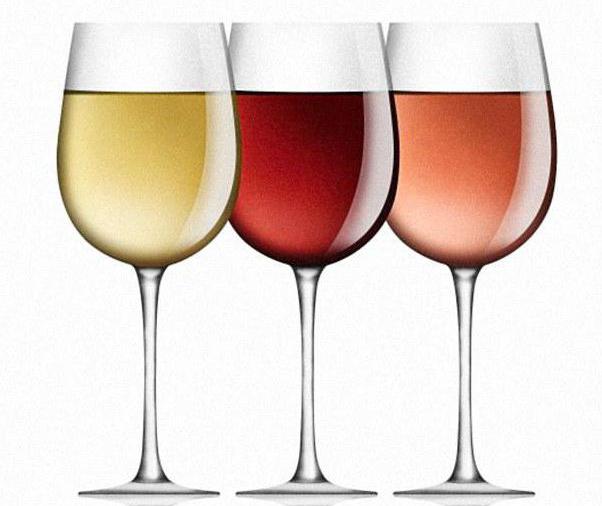
White table wine also begins with the process of crushing grapes. Then there is sulfation of the pulp. Wort separates. It is defended in full tanks. Next, the wort is removed from the precipitate and yeast wiring is added to it.Fermentation of this wine takes place in the temperature range from 16 to 20 ºС. In full tanks, the clarification process takes place. After this, the first transfusion occurs.
If wort fermentation occurs on the pulp, this process is carried out in tanks that are 75% full. After the start of fermentation, the descent of wine is carried out for 4-5 days.
A sparkling wine
The production of sparkling wine today is most often carried out by the reservoir method. At the same time, you do not need to store products in a basement in stacks of bottles for a long time. The duration of the production process in this case is reduced from 3 years to 2 months. In this case, you need to purchase a sealed tank. In the production of sparkling wines, it is of great importance.
Wine, liquor and yeast are poured into an airtight container. After the fermentation process, the champagne product is cooled, settles.
Continuous fermentation is also popular today. In this case, the fermentation sealed tank consists of 5 batteries. They connect with each other. When the mixture enters the first tank, yeast is added to it. Inside the container, the wine moves gradually. Fresh raw material enters the first tank, and a product ready for revision is withdrawn from the last. This method increases productivity by 30%. At the same time, the quality of the finished product remains consistently high.
Production costs
To draw up a business plan, it is first necessary to calculate production costs. Will need to purchase winemaking equipmentas well as raw materials. The press will cost about 320 thousand rubles, and the crusher for grapes with separator combs - 15 thousand rubles. Receivers for pulp cost about 25 thousand rubles. You will also need a conveyor (45 thousand rubles) and a press filter (110 thousand rubles). The total cost of the line for bottling wine is about 910 thousand rubles. The total amount of expenses for the purchase of equipment is 1,425 thousand rubles. When choosing a supplier of machines and conveyors, preference should be given to companies that independently launch and assemble the line.
For the first batch of wine, 50 tons of berries will be required. The average cost of raw materials is about 1 million rubles. Additional materials will cost about 200 thousand rubles. The total amount of capital expenditures will amount to 2.7 million rubles. If we take into account the salary of staff, we get 3.2 million rubles.
Company income
Wine production on the equipment presented is about 8 thousand decalitres per month. The cost of 1 bottle of finished products is taking into account the cost of 168.1 rubles.
In a month, the company will receive revenue from sales in the amount of 1344.8 thousand rubles. Net profit per month will be equal to 115.84 thousand rubles. The profitability indicator of the products is 12%. The activities of the enterprise will be economically feasible. The costs of its creation pay off in the first 3-4 years of work.
Having considered the features that it has wine production We can say that this is a profitable business.